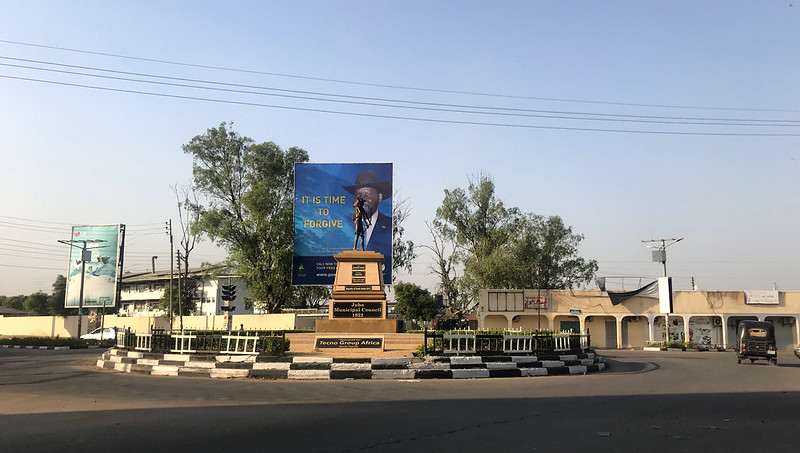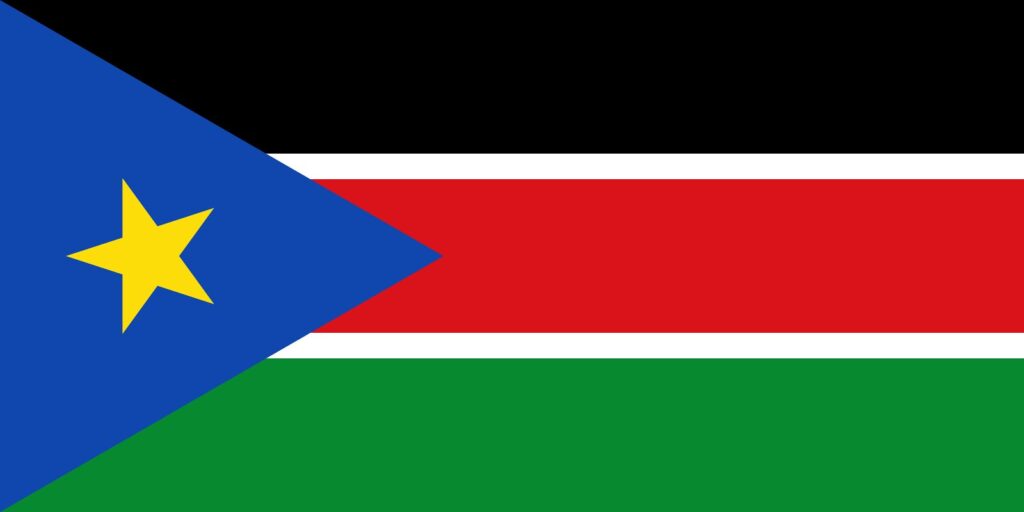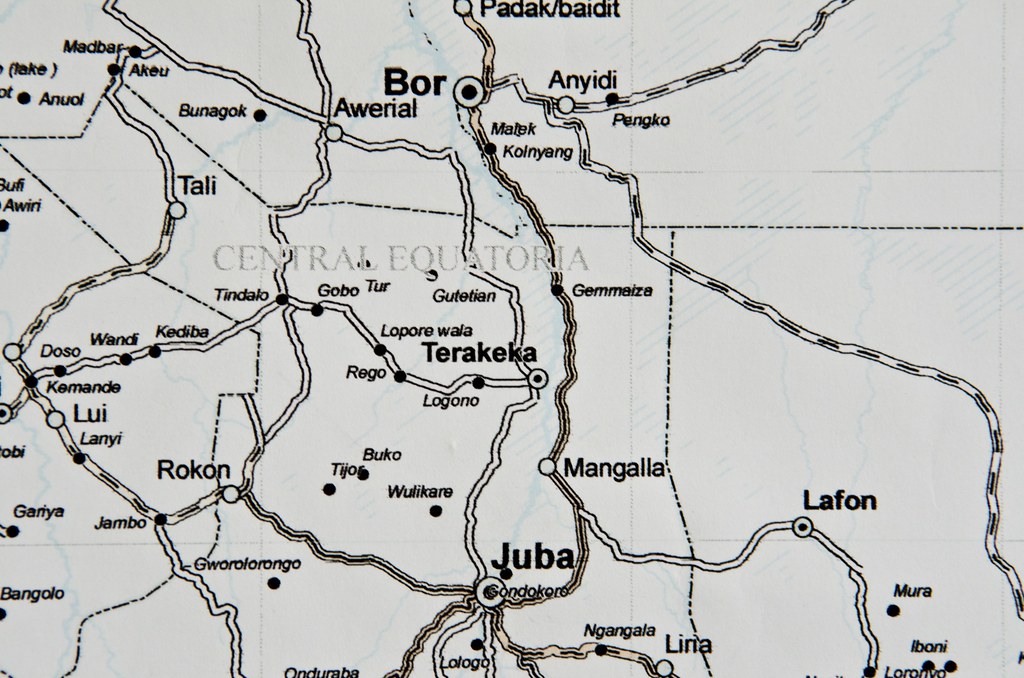South Sudan, History, Location, Map, Religion, Currency
On July 9, 2011, the Republic of South Sudan emerged as the world’s youngest nation and Africa’s 54th country. Nonetheless, civil war outbreaks in 2013 and 2016, ongoing subnational violence, inadequate public resource management, and political strife have eroded post-independence developmental achievements and exacerbated current humanitarian exigencies. Over a decade post-independence, South Sudan continues to experience fragility, economic stagnation, and unrest. Poverty is pervasive, intensified by violence, relocation, and external disruptions.
The execution of the Revitalized Agreement for the Resolution of the Conflict in the Republic of South Sudan (R-ARCSS) in September 2018 and the establishment of a Transitional Government of National Unity in February 2020 have fostered enhanced stability. The transitioning time has been recently prolonged to February 2027. Nonetheless, a slight economic rebound observed after the peace deal has been disrupted by the COVID-19 epidemic, unprecedented floods, the conflict in Sudan, and difficulties in state financial management. The economic picture of South Sudan is currently obscured by severe disruptions to its mainly oil-reliant economy, underscoring the necessity for diversification. The conflict in Sudan has profoundly affected South Sudan’s macroeconomic stability, as the latter relies on the former as its sole export route for oil to foreign markets. The ability to counteract major reductions in oil production or fluctuations in global oil and food prices is significantly limited by considerable issues in the management of oil industry income and inadequate fiscal discipline.

The susceptibility of South Sudan to climate change and natural disasters exacerbates the humanitarian crisis, threatening recovery and undermining development initiatives. Since its independence in 2011, the nation has had significant droughts (2011, 2015) and floods (2014, 2017, 2019, 2020, 2021, 2022, and 2024), leading to numerous fatalities, displacements, and livestock losses, which have profoundly affected the livelihoods of its populace. As of September 2024, extensive flooding has impacted over 735,000 individuals across 38 of 78 counties in South Sudan, exacerbating an already dire humanitarian crisis characterized by acute food insecurity, economic deterioration, ongoing conflict, disease outbreaks, and the consequences of the Sudan conflict.
South Sudan continues to experience a profound humanitarian disaster. Approximately 9 million individuals, including refugees in South Sudan, are projected to face urgent needs in 2024. Approximately 7.1 million people out of South Sudan’s total population of 12.4 million will want food assistance during the lean season from April to July 2024. Women and children remain the most impacted. The humanitarian issue has been intensified by the current fighting in neighboring Sudan, resulting in an influx of refugees and returnees into South Sudan. As of September 2024, South Sudan has received 797,189 returnees, refugees, and asylum seekers, with roughly 78% being South Sudanese refugee returns.
In the future, it will be essential to implement the peace agreement, enhance service delivery institutions, governance, and economic and public financial management systems, and tackle the underlying causes of fragility to build resilience against future shocks and establish the foundations for a diversified, inclusive, and sustainable growth trajectory.
What is the capital city of South Sudan?

The capital of South Sudan is Juba. As of 2023, it is the most recent capital city globally. It was designated the capital of South Sudan upon the nation’s declaration of independence from Sudan on July 9, 2011. It is situated on the White Nile River and is the most populous city in South Sudan. The current population is approximately 459,000 individuals. Juba serves as the hub for South Sudan’s oil sector and a transit point for travelers heading to Uganda, Kenya, and the Democratic Republic of the Congo.
Despite attaining capital city status in 2011, the region of Juba has been populated for centuries. Archaeologists have discovered evidence indicating that Juba has been inhabited by humans since 3000 BC.
The contemporary history of the region commenced in 1862 when Egypt established a military outpost at the location of present-day Juba. In 1899, Britain assumed control of the region and, in conjunction with a contingent of Greek traders, founded a settlement at Juba.
Between the 1920s and the 1940s, trade and commerce in Juba were dominated by Greek traders who provided goods to both indigenous Sudanese and British settlers. Numerous establishments were constructed in Juba, including the renowned Juba Hotel in the 1930s. It was partially constructed to offer accommodations for individuals traveling to Cape Town, South Africa, during their layover.
In 1947, Juba hosted the Juba Conference, convened to establish the nation of Sudan. Nonetheless, numerous southern Sudanese opposed the unification of the northern and southern regions. A civil war commenced in 1955, one year prior to Sudan’s independence. The conflict persisted until 1972. A second civil war commenced in 1983 and ultimately concluded in 2005. Juba was designated as the capital of the newly independent South Sudan.
Following the referendum to determine South Sudan’s independence, Juba was designated as the official capital of the nation. Subsequent to the numerous conflicts, much of Juba’s infrastructure sustained damage. Since gaining independence, South Sudan and Juba have experienced additional conflicts that have undermined the city’s stability and prosperity.
What is the geographical landscape of South Sudan?
Sudan is a warm nation characterized by an extended rainy season. The landscape predominantly consists of plateaus, plains, and mountains. Mount Kinyeti is the tallest summit in South Sudan, reaching an elevation of 3,187 meters. At the heart of South Sudan lies an extensive swamp region known as Al-Sudd. A tributary of the Nile River, referred to as the White Nile, traverses this region. This river traverses the capital city of Juba.
Bandingilo National Park, located in the southern region of the country, is a designated protected area where the second-largest wildlife migration can be observed. This park hosts herds of elephants, buffalo, and giraffes, in addition to lions, African wild dogs, rhinos, and various species of gazelle and antelope. In the southern region of the country, forest reserves exist to protect species such as chimpanzees and giant forest hogs from habitat destruction and poaching.

What is the population of South Sudan?
The population of South Sudan exceeds 11.5 million. The majority of the population in South Sudan resides in rural areas rather than urban centers. A significant number of individuals reside in thatched-roof dwellings with inadequate sanitation and subsist on less than one dollar daily. The population of this country has been severely impacted by conflicts. Over 2 million individuals perished as a result of the wars, and an additional 4 million were displaced, becoming refugees.
Approximately 60 ethnic groups inhabit South Sudan. The predominant ethnic group in South Sudan is the Dinka, constituting approximately 35% of the population. The Nuer constitute the second largest group, while the Shilluk represent the third largest. Additional groups comprise the Toposa, Otuho, Didinga, Tennet, Acholi, Murle, and Azande populations.
What is the design of the South Sudan flag?

The flag of South Sudan was first adopted in 2005 following the region’s secession from Sudan and declaration of independence. It comprises three horizontal stripes: black, red, and green. Each band is delineated by slender white stripes. A blue triangle is positioned on the left side of the flag, featuring a five-pointed star at its center.
The hues of the South Sudanese flag symbolize the subsequent elements:
Black: the people of South Sudan
Red: The blood shed for independence
Green: The natural resources of South Sudan and the nation’s advancement
White: Peace
Blue: The Nile River Yellow: Hope, determination, and unity of South Sudan
What is the official language of South Sudan?
English is the official language of South Sudan. Nevertheless, it is not extensively utilized. The most frequently spoken languages include Arabic, Dinka, Nuer, Bari, and Zanda. South Sudan is home to more than 60 spoken languages. Juba Arabic, also known as South Sudanese Arabic, is among the most prevalent languages.
Below are several prevalent phrases and terms in South Sudanese Arabic:
Greetings: Peace be upon you.
How are you? Keif Alhal?
I am well, and you?
What is your name: Ismik Mino?
My name is…: …ismi
Where are you from?
I am from…: أنا من…
Farewell: Farewell
South Sudan Map

What is the demographic count of South Sudan?
The population of South Sudan exceeds 11.5 million. The majority of the population in South Sudan resides in rural areas rather than urban centers. A significant number of individuals reside in thatched-roofed dwellings with inadequate sanitation and subsist on less than one dollar daily. The population of this country has been severely impacted by conflicts. Over 2 million individuals perished as a result of the wars, and an additional 4 million were displaced, becoming refugees.
Approximately 60 ethnic groups inhabit South Sudan. The predominant ethnic group in South Sudan is the Dinka, comprising approximately 35% of the population. The Nuer constitute the second largest group, while the Shilluk represent the third largest. Additional groups comprise the Toposa, Otuho, Didinga, Tennet, Acholi, Murle, and Azande peoples.
What characterizes traditional South Sudanese cuisine?
The primary staples of South Sudanese cuisine are grains, including wheat, sorghum, corn, and millet. Additional prevalent foods comprise potatoes, beans, lentils, peanuts, yams, okra, goat, mutton, fish, chicken, and an assortment of fresh vegetables and fruits.
The national dish of South Sudan is known as Kisra. It is a slender fermented bread composed of durra or wheat. It can be produced in two distinct methods. The first is termed kisra rhaheeefa, which is baked in thin sheets, while the second is a porridge known as kisra aseeda.
Below are additional dishes that are favored in South Sudan:
- Tamia: Comparable to falafels but composed of fava beans instead of chickpeas. Tamia is a renowned street food delicacy.
- Salat Sabadi: A dip composed of yogurt and eggplant, suitable for dipping kisra bread.
- Foul medames: A stew composed of fava beans, garlic, lemon juice, tomatoes, feta cheese, salad greens, and a spicy sauce known as shata. This dish is subsequently garnished with boiled eggs and spring onions or onions. It is accompanied by flatbreads or a tomato salad.
- Shaiyah: This dish consists of grilled goat, lamb, or beef prepared in the Sudanese style. It is prepared for special occasions and accompanied by onions, lemon, a spicy sauce known as shata, flatbreads, and tomato salad.
- Kajaik: A Sudanese fish stew prepared with both dried and fresh fish, accompanied by vegetables. It is accompanied by porridge and consumed manually.
What is the currency used in South Sudan?
The official currency of South Sudan is the South Sudanese pound (SSP). Introduced in 2011, it is presently the most recent form of currency globally. One South Sudanese pound is equivalent to 100 piastres.
The standard denominations include banknotes of 1, 5, 10, 20, 25, 50, 100, 500, and 1000, along with coins of 0.10, 0.20, 0.50, 1, and 2.
What is the predominant religion in South Sudan?
South Sudan lacks an official religion. The predominant religion in South Sudan is Christianity, with Catholicism and Anglicanism as the most prevalent denominations. Approximately 60% of the population adheres to Christianity, while an additional 32% practice traditional African religions, and 6% follow Islam.
